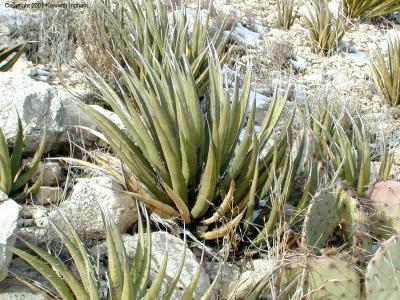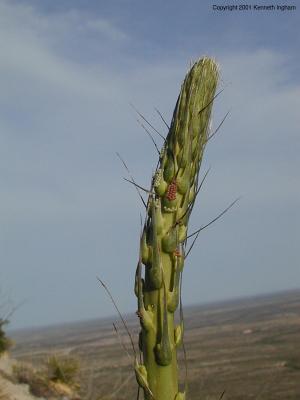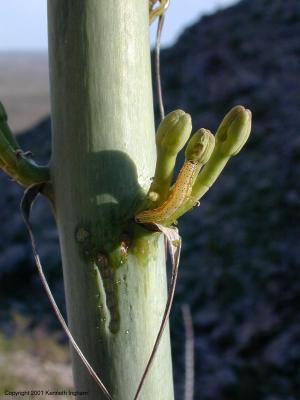Our favorite common name for this plant is "shindagger." We commonly contend with this plant during our travels in Carlsbad Caverns National Park. Diana once had a Lechuguilla spine in her leg for 6 months before it dissolved. A member of the Agave family, it is an indicator species for the Chihuahuan Desert.
Translated from Spanish, Lechuguilla would be "little lettuce". However, those spines are most un-lettuce-like. We have heard of people flattening their tires by driving over a Lechuguilla plant.
This photo is from the Rattlesnake Canyon hike.



